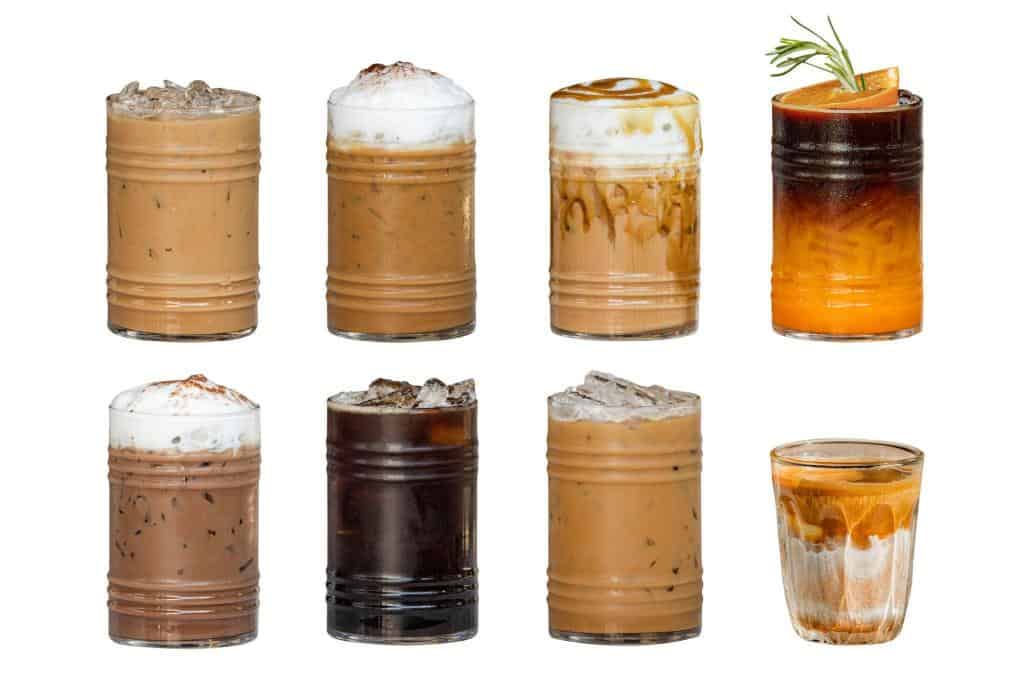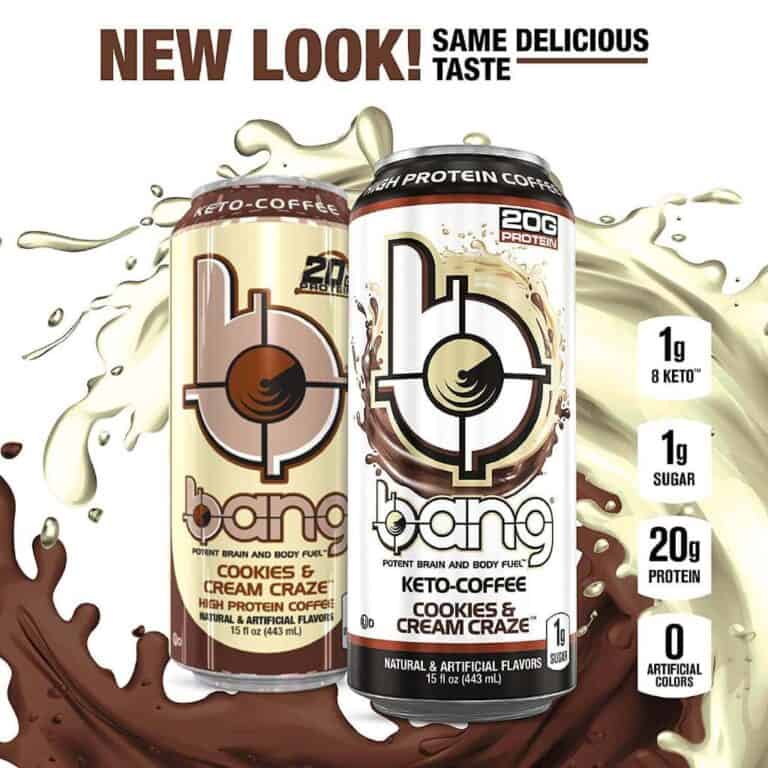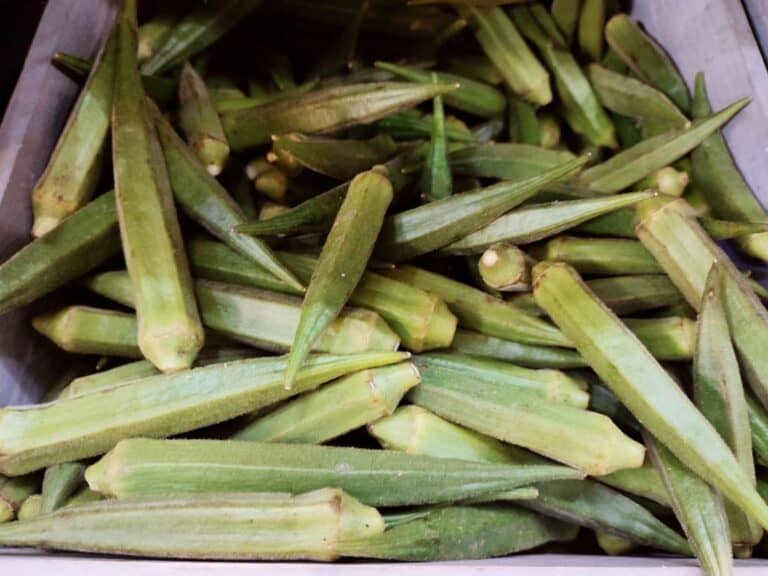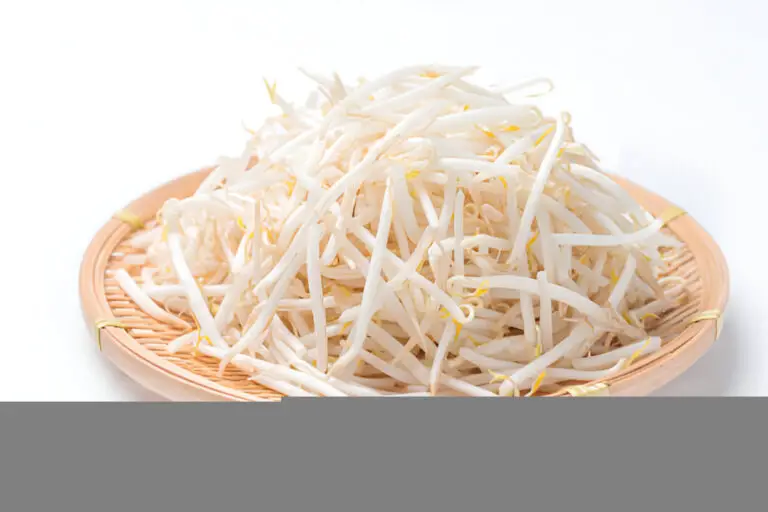Is Toffee Coffee? Why Does Toffee Taste Like Coffee

Picture this: you’re sitting in a cozy café, sipping on your favorite cup of joe, when suddenly a tantalizing aroma wafts through the air. Your attention is immediately captured by a plate of golden-brown toffee sitting nearby, its glossy surface glistening under the soft glow of the café lights.
As you take a bite, a rush of flavors sweeps over your taste buds, and you can’t help but wonder: is toffee secretly coffee in disguise? Why does it taste so remarkably like that beloved brew?
Intriguing, isn’t it? The connection between toffee and coffee runs deeper than meets the eye, and in this article, we’re about to embark on a journey to unravel the secrets behind their shared flavors.
Prepare to delve into the world of culinary chemistry and explore the captivating factors that make toffee taste like coffee. Get ready to satisfy your curiosity and indulge your taste buds as we uncover the delightful mystery of toffee’s coffee-like allure. So grab a cup of coffee and a delectable piece of toffee, and let’s embark on this flavorful adventure together.
Why Does Toffee Taste Like Coffee
So, why does toffee sometimes taste like coffee? The answer lies in the complex chemical compounds present in both toffee and coffee. Both of them contain a compound called 2-acetyl-5-methylfuran, which is responsible for their shared flavor notes. This compound is produced when sugars and amino acids react under certain conditions.
The intriguing similarity in taste between toffee and coffee can be attributed to the presence of a specific chemical compound known as 2-acetyl-5-methylfuran. This compound is responsible for the shared flavor notes between these two distinct treats. The occurrence of 2-acetyl-5-methylfuran is a result of the complex chemical reactions that take place when sugars and amino acids interact under specific conditions.
Toffee, a delectable confection made primarily from sugar and butter, undergoes a caramelization process during its production. The sugars present in the toffee, such as sucrose, fructose, and glucose, undergo heat-induced reactions, leading to the formation of various flavorful compounds.
So the taste similarity of the flavor is not because toffee has caffeine on it, but more complex than that.
Maillard Reaction: The Culprit
The Maillard reaction, a chemical reaction that occurs when sugars and proteins are heated together, plays a significant role in the development of flavor in both toffee and coffee. This reaction is responsible for the browning and caramelization of the sugars, resulting in the characteristic taste and aroma that we associate with toffee and coffee.
When the Maillard reaction takes place, it produces a wide range of compounds that contribute to the flavors we perceive. One of these compounds is 2-acetyl-5-methylfuran, which has a distinct coffee-like aroma. This compound is found in both toffee and coffee due to the similar reactions that occur during their production processes.
The presence of 2-acetyl-5-methylfuran in both toffee and coffee creates an overlap in their flavor profiles, explaining why toffee can sometimes taste like coffee. The compound contributes to the roasted, nutty, and caramel-like notes found in both treats.
It’s important to note that the taste similarity between toffee and coffee is not solely attributed to 2-acetyl-5-methylfuran. Other compounds and flavors present in coffee, such as acids, oils, and additional aromatic compounds, contribute to its overall taste. However, the presence of this shared compound plays a significant role in creating the reminiscent flavors between toffee and coffee.
Coffee Influence
Another reason why toffee can taste like coffee is the influence of coffee in the production of certain toffee varieties. Some toffee recipes include coffee or coffee extracts as an ingredient. When coffee is added to the toffee mixture, its flavors infuse into the candy, creating a delightful coffee undertone that enhances the overall taste. This intentional addition of coffee amplifies the connection between toffee and coffee.
The Power of Roasting
The roasting process also plays a role in the coffee-like taste of toffee. Just like coffee beans, toffee undergoes a roasting process that enhances its flavors and gives it a distinctive character. The sugar and butter in toffee caramelize during the roasting process, resulting in deeper flavors and a hint of bitterness, reminiscent of roasted coffee beans.
Exploring Toffee Varieties
Toffee comes in various forms and flavors, each with its unique qualities and taste profiles. Here are a few popular toffee varieties you might want to try:
| Toffee Variety | Description |
| Traditional Toffee | Classic toffee made with butter and sugar, often includes nuts or chocolate. |
| Coffee Toffee | Toffee infused with coffee or coffee extracts for a distinct coffee flavor. |
| Salted Caramel Toffee | Toffee with a hint of salted caramel, combining the sweetness of toffee with a touch of savory saltiness. |
| Chocolate Almond Toffee | Toffee enriched with smooth chocolate and crunchy almonds, creating a delightful texture and flavor combination. |
| Espresso Crunch Toffee | Toffee infused with espresso and studded with bits of crunchy toffee, delivering a double dose of coffee goodness. |
The Magic of Toffee-Making and The Role of Ingredients
Toffee-making is a culinary art that requires precision and attention to detail. The process involves carefully heating sugar and butter to specific temperatures to achieve the desired texture and flavor. The ingredients are heated until the sugars caramelize, resulting in a rich, golden-brown mixture. It is then poured onto a flat surface, where it cools and hardens into the delectable toffee we know and love.
The ingredients used in toffee-making greatly influence its taste. High-quality butter adds richness and a smooth mouthfeel, while different sugars, such as brown sugar or golden syrup, contribute unique flavors and textures. Nuts, such as almonds or walnuts, provide crunch and enhance the overall sensory experience. By selecting the right combination of ingredients, toffee makers can further enhance the coffee-like undertones or explore different flavor profiles.
Toffee and Coffee-Inspired Treats
Beyond the traditional toffee candies, the intriguing flavor connection between toffee and coffee has inspired the creation of various coffee-infused treats. Here are a few delightful examples:
- Toffee Coffee Cake: Indulge in a moist and flavorful coffee-infused cake with a layer of toffee crumble on top. The combination of coffee and toffee flavors creates a heavenly dessert perfect for any coffee lover.
- Toffee Coffee Ice Cream: Savor the creamy goodness of coffee-flavored ice cream with swirls of toffee throughout. The contrasting textures and complementary flavors make this frozen treat a true delight.
- Toffee Coffee Cookies: Experience the ultimate cookie bliss with coffee-infused into cookie dough studded with bits of toffee. These cookies offer a delightful balance between the rich flavors of coffee and the sweetness of toffee.
What Does Toffee Pair Well With?
When it comes to pairing toffee with other flavors, the possibilities are as endless as the imagination. Toffee’s versatility allows it to seamlessly blend with a wide range of ingredients, creating delectable combinations that will leave your taste buds dancing with delight.
Let’s embark on a flavorful exploration and uncover some of the enchanting pairings that complement the unique qualities of toffee. Whether you’re a fan of traditional toffee or have a penchant for its gourmet variations, there’s a world of flavors waiting to be discovered.
- Chocolate: Ah, the classic combination of toffee and chocolate—a match made in sweet heaven. The smooth, velvety richness of chocolate beautifully harmonizes with the buttery sweetness and slight crunch of toffee. Whether it’s a milk chocolate coating enveloping a slab of toffee or chocolate chips artfully embedded within its caramelized core, the marriage of these two flavors is nothing short of divine.
- Nuts: Toffee and nuts have an undeniable chemistry that creates a symphony of textures and tastes. The addition of roasted almonds, walnuts, or pecans to toffee introduces a delightful crunch and nuttiness, perfectly complementing its chewy caramel base. Each bite becomes a harmonious medley of flavors—a decadent dance between buttery toffee and the earthy nuances of the nuts.
- Salt: The interplay between sweet and salty is a culinary sensation that captivates the palate. When a sprinkle of salt is introduced to toffee, it creates a tantalizing contrast that elevates its flavor profile to new heights. The saltiness acts as a counterbalance to the sweetness, enhancing the overall taste experience and adding a touch of sophistication to this beloved treat.
- Coffee: Ah, the connection comes full circle—coffee and toffee reunite once again. Toffee’s inherent coffee-like notes and the deep, robust flavors of a freshly brewed cup of java create a sensory experience that is simply unmatched. Indulge in a piece of toffee alongside a steaming mug of coffee, and let the harmonious symphony of flavors unfold, as the rich sweetness of toffee mingles with the bold bitterness of the coffee.
- Fruit: Toffee, with its sweet and buttery nature, serves as an excellent companion to a variety of fruits. Whether it’s the tartness of apples, the juiciness of strawberries, or the tropical allure of bananas, the contrasting flavors play off each other, creating a delightful balance. The refreshing burst of fruit complements the indulgence of toffee, making it a perfect accompaniment for those seeking a vibrant and well-rounded treat.
As you can see, toffee’s charm lies not only in its individual splendor but also in the way it effortlessly harmonizes with a multitude of flavors. The art of pairing toffee is limited only by your imagination, so feel free to explore and experiment with different combinations that speak to your taste preferences.
Let your palate be your guide as you venture into the world of toffee pairings, and prepare to be delighted by the symphony of flavors that await you.
The Taste of Nostalgia
For many, the taste of toffee evokes feelings of nostalgia and warmth. The combination of flavors that resemble coffee can transport us to cozy coffee shops or bring back fond memories of shared moments over a cup of joe. The familiar taste of toffee can evoke a sense of comfort and familiarity, making it a beloved treat for people of all ages.
In Conclusion
While toffee is not coffee, the presence of certain compounds and the influence of the Maillard reaction give toffee a distinct coffee-like taste. The shared chemical compounds and the intentional addition of coffee in some toffee varieties contribute to the connection between these two flavors. The roasting process and careful selection of ingredients further enhance the coffee undertones in toffee, resulting in a delightful sensory experience.
Whether you enjoy toffee on its own or paired with a cup of coffee, the combination of these flavors is sure to tantalize your taste buds. The world of toffee offers a wide array of varieties and inventive coffee-infused treats to explore. So, indulge in the richness of toffee and let its coffee-like flavors transport you to a realm of sweetness and warmth.






